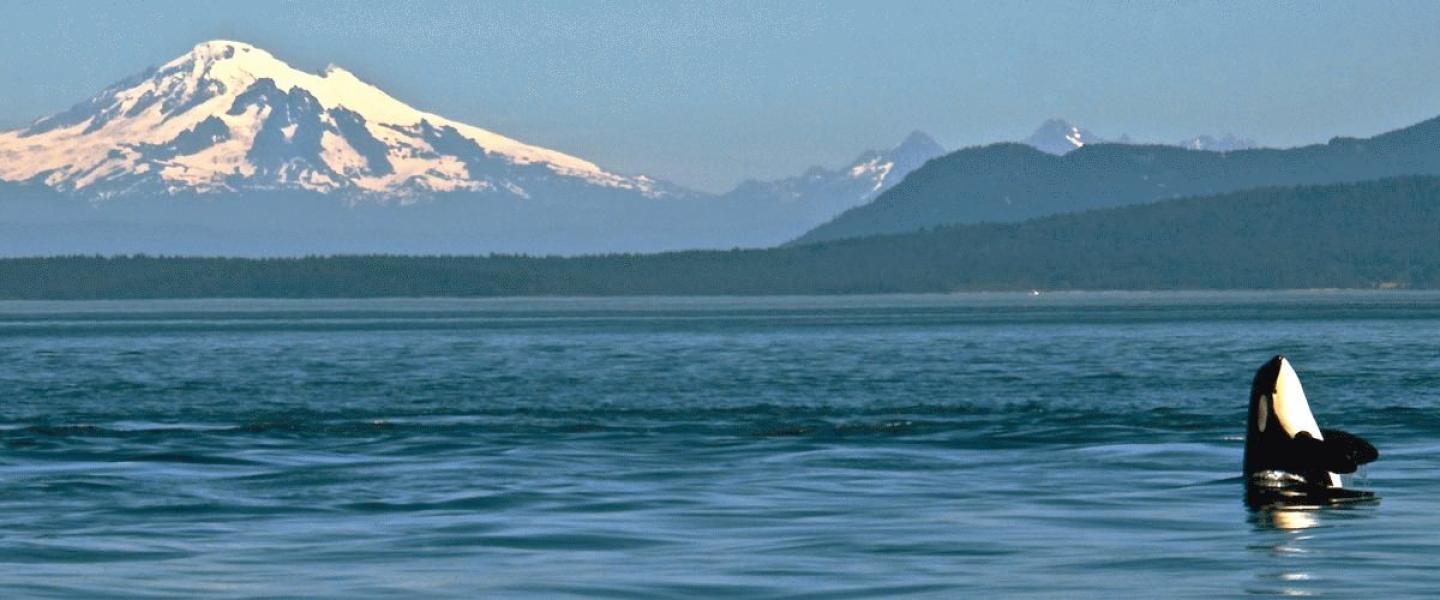
Any day on the water can be full of surprises and as we left the dock, intending to go find Humpback Whales, Captain Mike got word of two male Orcas in Rosario Strait. Humpbacks are wonderful creatures, but any chance to see black and whites shouldn't be taken for granted. So, we headed for the East side of the San Juans with high hopes.
When reports of lone or small groups of Orcas come in, they can often be Transients. Also named Bigg's Killer Whales, after the first researcher who studied this ecotype, Transients while still very closely related to Residents have a very different style of hunting and different social dynamics. While they do form matrilinal groups, their dynamics are less static and you can frequently find small or even lone animals around the San Juans. Largely this has to do with their main source of food, which are marine mammals like Harbor Seals which require different foraging techniques and in turn influence social dynamics.
Arriving in Rosario Strait, we found flat water under blue skies, and the two males cruising around in search of food. After several surfacings, we figured out that these were T097 and T093, presumed brothers. We followed them through the strait as they zip-zagged around between Lopez and Fidalgo Islands. It was fun to see two males traveling in such close association, coming up for breaths within seconds of each other.
We had a great rest of the trip too. The South end of Lopez is one of my favorite coast lines in the San Juans and we followed that back to Cattle Pass. Lots of seals, sea lions, and eagles are typically seen, but as a birder I'm always excited about birds on the water. As we rounded Iceberg Point, Captain Mike stopped the boat on a dime, and there they were, a pair of Tufted Puffins! As an infrequent, charismatic bird, this was the best possible way to round out the day!
Naturalist Brendan
M/V Sea Lion San Juan Safaris